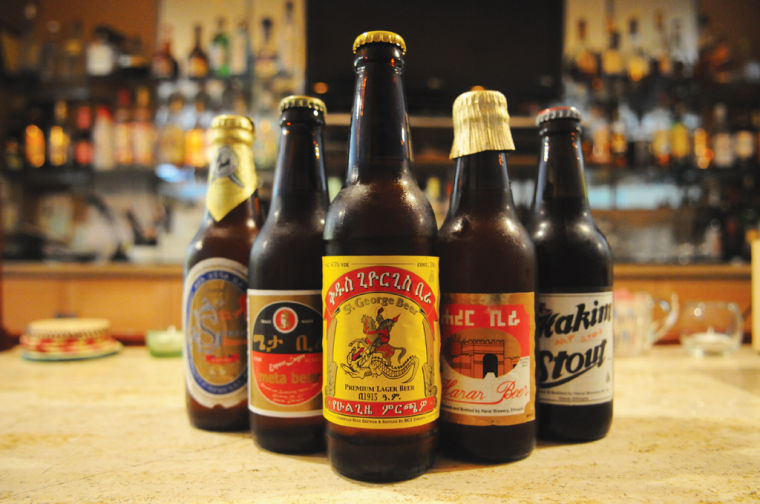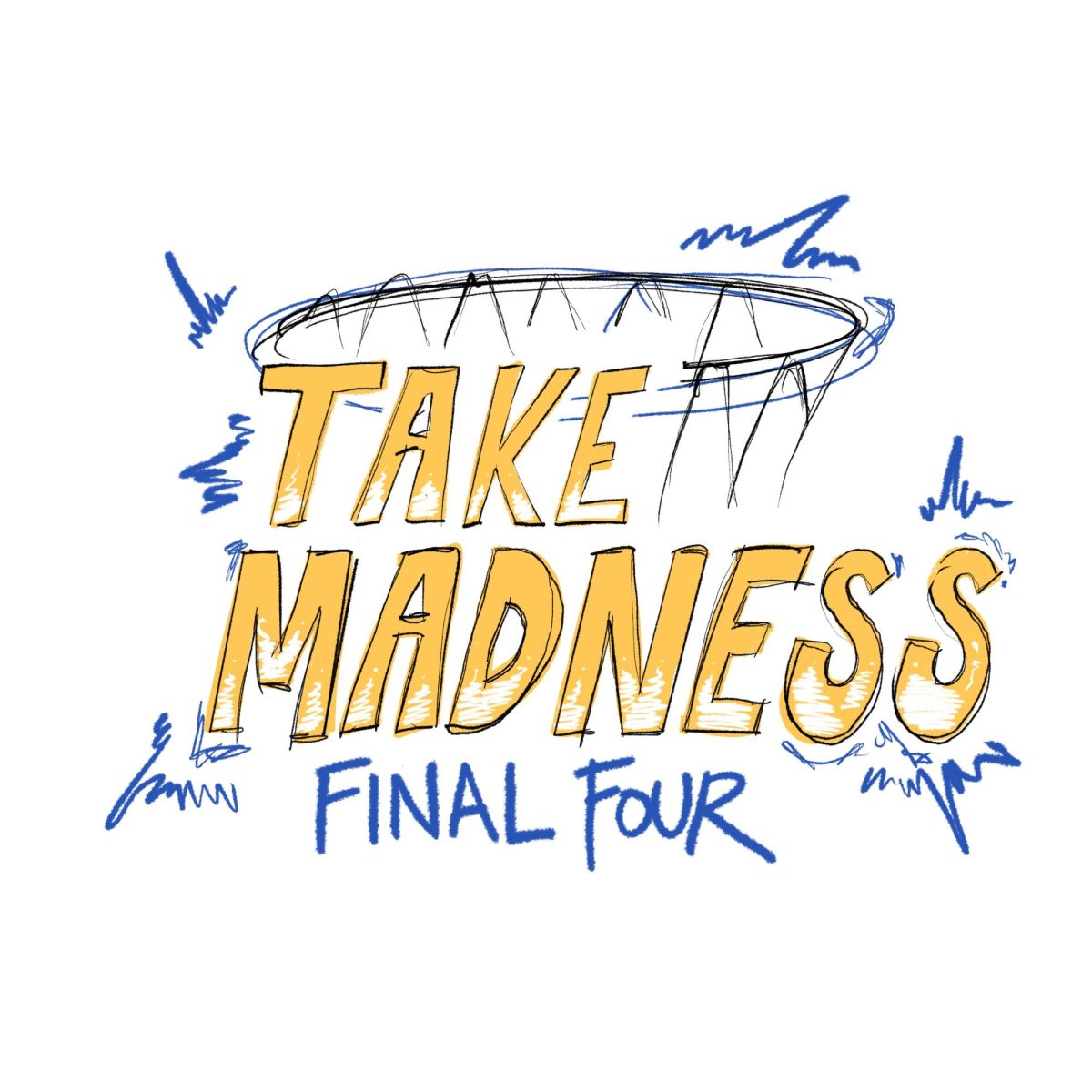Ethiopian beers provide gateway into exotic new world of flavor
April 19, 2013
About 15 miles from Addis Ababa, the capital of Ethiopia, a brewery sits next to a soft mineral spring. The water from the spring meets international brewing standards, as it requires no additional treatment. The locals call it “holy water.”
The brewery also maintains a public park on its grounds where people can gather to enjoy nature along with Meta, which the brewery produces and which Kebede Tadesse, a businessman who distributes Ethiopian beer in the U.S., called “the king of beers in Ethiopia.”
Meta and other Ethiopian beers offer a possible alternative to common American beer for many reasons that could make them attractive to American consumers. But for the time being, enthusiasts will have to work to find them, as several factors currently limit availability in the U.S.
And among those who already appreciate them, loyalty is fierce.
“I have people driving hundreds of miles just to get a sip of this beer,” said Tadesse, CEO of the Hanover, Md., Shipping Services LLC, which transports Ethiopian beer all over the U.S.
Tana, an Ethiopian restaurant on Baum Boulevard in East Liberty, which to Tadesse’s knowledge is Pittsburgh’s only establishment serving Ethiopian beer, described those who appreciate these brands in similar terms.
Seifu Haileyesus, the owner of Tana, said that one of his customers regularly travels from the North Hills to get the Bedele, a highly rated Ethiopian pale lager.
Tadesse attributed this small, but loyal, following to the distinctive flavors present in some Ethiopian beers.
Tadesse said the current market for the Ethiopian beers he distributes is ethnically based. The beers are available primarily in Ethiopian restaurants such as Tana, and Tadesse acknowledged that most American beer drinkers don’t seek out the beers he ships.
“Our next chapter, our next focus, our next goal, is to move into the mainstream market,” he said about his company.
But without manufacturers’ assistance in promoting the beer, Tadesse doesn’t think this will happen anytime soon.
Tadesse said the companies that produce Ethiopian beer have not shown much interest in increasing their exports, choosing instead to meet the growing domestic demands for their beer.
While it might make sense to sell the beer in the U.S., where consumers will pay more than in Ethiopia, Tadesse said that the price advantage is not as great as it could be. This is partly because there is no production plant for beer bottles in Ethiopia. Ethiopian producers are able to reuse the bottles for beer that they sell in Ethiopia and must replace the bottles they export by importing new bottles from China.
Joseph Tucker, the executive director of RateBeer.com, a website that ranks beers and serves as a resource for beer enthusiasts, pointed out that most Ethiopian beers — with the exception of Hakim Stout — are pale lagers, a style well-suited for hot summer days.
In addition to their flavors, many of these beers boast a lower alcohol-by-volume level. Alcohol, a diuretic, can cause drinkers to become dehydrated when they consume beverages containing it, especially in hot weather. The lower alcohol content in many Ethiopian beers make them ideal for summer drinking in hotter parts of the U.S. or for anyone who likes to drink beer but also frequently engages in strenuous physical activity.
Tucker said that, until recently, consumers in the U.S. wanted beers with increasingly high measures of ABV. He said that trend is currently leveling off and “session beers,” or beers with alcohol contents lower than 4.6 percent, are becoming more popular.
Although Meta contains 5.5 percent ABV, Bedele and Harar, two highly rated Ethiopian pale lagers, are session beers with only 4.25 percent ABV.
Tucker said that although Ethiopian breweries, like those in Japan and other countries that learned to brew beer relatively recently, usually produce pale lagers. But some Ethiopian beers performed particularly well on his site.
Reviewers on RateBeer favored Bedele, which the site ranks in the 95th percentile of pale lagers on a scale from first to 100th. They cited such features as a slightly sweet flavor that complements richly seasoned Ethiopian cuisine.
The RateBeer’s users gave Harar similarly positive ratings, placing it in the 91st percentile of pale lagers and describing it as easy to drink because of its subdued taste of hops, a bitter ingredient used in the brewing process. They believed that, like Bedele, Harar goes well with spicy food.
While Meta brands might be popular in Ethiopia, Meta Export Lager lagged behind in RateBeer’s rankings but still scored in the 71st percentile for its category — well above average. St. George, a pale lager that Ethiopia’s oldest brewery began producing in the 1920s, scored in the 48th percentile for beers of its type.
Tucker said that beer drinkers in the U.S. have moved away from “macrobrews” — mass-produced domestics such Budweiser, Miller and Coors, which are available everywhere — and have begun seeking variety. Many are choosing craft beers, which he defined broadly as any microbrew or import.
Haileyesus said that Tana carries Meta Export Lager, St. George and Harar. He said his restaurant also carries Bedele when it is available, although it frequently is not. In addition, Tana carries Hakim Stout, which scored only in the 25th percentile of its category on RateBeer, but which some reviewers enjoyed because of its sweet flavor.
Tana serves each of these beers at $4.50 a bottle, a dollar more than its domestic drafts.
While Tucker acknowledged the limited availability for Ethiopian beers, he saw Ethiopian beers’ labels, with their distinctive lettering in Amharic — the official language of the Ethiopian state — and less-polished look in comparison to the labels of many domestic macrobrews, as something many Ethiopian beers have in common with other craft beers.
He said that instead of advertising campaigns, less well-known beers often rely on “champions,” or people who create local demand for beer after they try it and spread the word.
“There’s something antagonistic about traditional advertising in beer,” Tucker said. “People just don’t like it, or they think it’s a sign of a lack of quality.”



